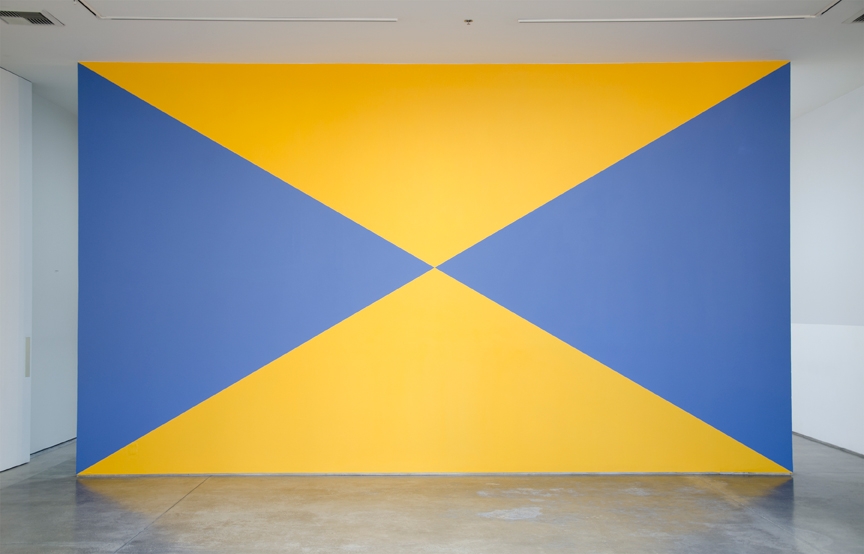More than 30 years separate the birthdates of Olivier Mosset and Carlos Bunga. The former grew up post-Second World War France, was a member of the famed BMPT art group and came into art when divisions among practitioners of abstract painting were trenchant and, at times, political. Bunga, born in 1976 in Portugal, has come into his own over the past decade, a period during which it has been difficult to gain any orientation at all, much less a stance, about abstract painting, in which old styles are redeployed and gustily sold without concern for the history that initially compelled them.
It is a provocative pairing, and not Mosset’s first collaboration with an artist significantly younger than he (as recently as 2011 Christopher Grimes had Mosset paired with the custom motorcycles of artists Vincent Szarek and Jeffrey Schad). This time Mosset deploys two large wall paintings, one appropriated from a mural design the artist saw on a wall in Mexico, but both as anonymous and as stark as any other Mosset painting. In firm contrast with Mosset’s work are Bunga’s handmade objects and architectural interventions, artworks made with a style (at least according to the gallery materials) all Bunga’s own. The death of author versus originality, politics versus romance, historical mediations on the monochrome and pattern versus the ahistorical warmth of raw materials: it is all very tidy.
Mosset’s large paintings are confident and strident in the space, and it comes through with great irony that they do not conjure as many direct influences as Bunga’s work. Mosset’s large diamonds of blue and yellow, massive across the first wall one sees in the gallery, appear as though apropos of nothing. The painting owes no allegiances and actually resists art-historical referents, causing one to think less of colour field than of homeowners wanting to add a little colour to their garage doors. Bunga’s work, on the other hand, leads one to Arte Povera and even Surrealism, perhaps mixed with more than a little Doris Salcedo. Though humbly made (almost to the point of demanding that a viewer acknowledge its humility), Bunga’s work is intent on being art.
In the end, Bunga’s works almost seem sacrificed to the higher purpose of understanding Mosset. The Frenchman’s work is difficult, and taken in isolation, little can be gathered from its deployment of flat monochromes and stripes, especially not the sensation that such gestures were pictorially revolutionary. Mosset’s paintings often feel empty, which can drive one to the wall label for help. Yet next to Bunga’s very specific and perhaps derivative practice, one senses the nature of Mosset’s original refusals, his resistance to playing ball with the typical arguments for abstract painting and art history. The Mossets at Christopher Grimes feel both local and strange, as if taken from the suburban strip mall or the retaining walls next to highways and placed in the gallery. Here they are, deadpan and nondescript, with no explanation needed.
This article was first published in the April 2015 issue.
